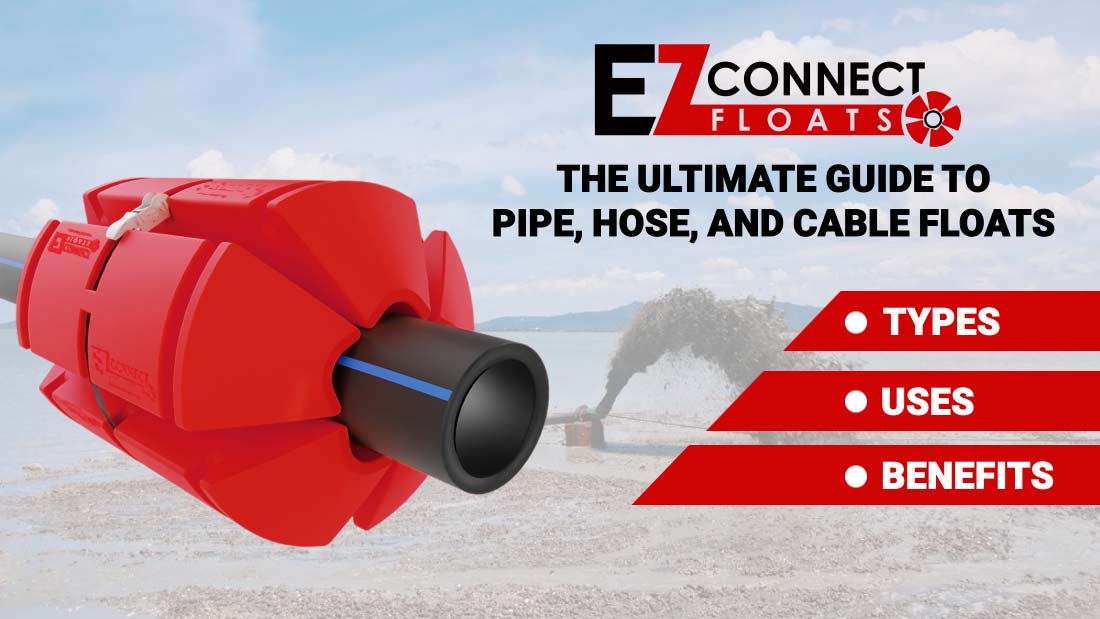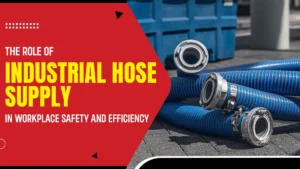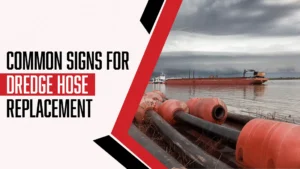
The Ultimate Guide for Pipe, Hose, and Cable Floats
Keeping pipes, hoses, and cables afloat is paramount in various marine, industrial, and even recreational settings. Whether it’s for offshore oil rigs, dredging operations, or simply securing swimming pool equipment, floats are indispensable. Understanding these essential flotation devices’ types, uses, and benefits is crucial for anyone working with waterborne infrastructure. In this comprehensive guide, we’ll dive into the world of pipe, hose, and cable floats, exploring their diverse applications and advantages.
Types of Floats:
- Pipe Floats:Pile floats are designed to support pipelines and come in various shapes and sizes to accommodate different pipe diameters and buoyancy requirements. They are often made from durable materials such as polyethylene or foam-filled shells to withstand harsh marine environments.
- Hose Floats:These floats are designed to keep hoses afloat, preventing them from sinking or getting tangled underwater. Hose floats are typically cylindrical or rectangular and can be easily attached to hoses using straps or clamps.
- Cable Floats:Cable floats are essential for supporting underwater cables, preventing damage, and ensuring efficient transmission of electricity or data. They are often designed with grooves or channels to hold cables securely in place and are available in various configurations to accommodate different cable sizes and arrangements.
Uses of Floats in Various Industries:
- Pipe Floats:
- Offshore Oil and Gas Industry: Pipe floats support subsea pipelines in offshore oil and gas extraction and transportation projects. They help maintain the integrity of underwater pipelines, ensuring the safe and efficient transfer of oil and gas from offshore rigs to onshore facilities.
- Marine Construction: In marine construction projects such as installing underwater pipelines for desalination plants or offshore wind farms, pipe floats buoyantly support the pipelines during installation and maintenance operations.
- Hose Floats:
- Marine Farming: Hose floats, such as those used to cultivate seaweed or shellfish, are extensively used in marine farming operations. They support underwater hoses that supply nutrients or water to the farm, ensuring optimal growing conditions and maximizing crop yields.
- Dredging Industry: Hose floats play a crucial role in dredging operations. They support discharge hoses used to transport dredged materials to designated disposal sites. Keeping the hoses afloat prevents sedimentation and ensures efficient dredging operations.
- Cable Floats:
- Renewable Energy Sector: Cable floats are essential for installing and maintaining underwater power cables in offshore wind and tidal energy projects. They provide buoyant support to electrical cables, ensuring reliable transmission of renewable energy from offshore installations to onshore power grids.
- Submarine Communications: In the telecommunications industry, cable floats support underwater fiber optic cables that transmit high-speed data and communications signals across long distances, including transoceanic cables.
- Oil and Gas Spill Response: Cable floats can be repurposed for use in oil and gas spill response efforts, where they support containment booms and barriers deployed to contain and control oil spills, minimizing environmental damage and facilitating cleanup operations.
- River and Coastal Restoration: Floats are employed in river and coastal restoration projects to support floating wetlands, erosion control barriers, and other habitat restoration structures. These structures help improve water quality and restore ecological balance in affected ecosystems.
Benefits of Floats:
- Buoyancy and Stability: Floats provide buoyancy, keeping pipes, hoses, and cables afloat and preventing them from sinking or shifting underwater. This ensures reliable performance and minimizes the risk of damage or disruption.
- Durability and Resistance: High-quality floats are built to withstand the rigors of marine environments, including exposure to saltwater, UV radiation, and rough weather conditions. They are engineered for durability and long-term reliability, reducing maintenance costs and downtime.
- Versatility and Customization: Floats are available in various sizes, shapes, and configurations to suit different applications and requirements. Flats are available to meet specific needs, whether it’s a small-scale aquaculture operation or a large-scale offshore project.
- Environmental Compatibility: Many modern floats are manufactured using eco-friendly materials and production processes, minimizing their environmental footprint. Additionally, floats designed for oil spill response and pollution control help protect aquatic ecosystems and preserve natural resources.
Conclusion:
Pipe, hose, and cable floats are indispensable for marine, industrial, and recreational applications. By understanding the different types, uses, and benefits of these flotation devices, professionals and enthusiasts can make informed decisions and optimize their operations. Whether maintaining offshore infrastructure, supporting aquaculture activities, or enhancing recreational amenities, floats are crucial in navigating the waters safely and efficiently.
Have Questions?
Get in touch with us now!
Related Blogs

The Role of Industrial Hose Supply in Workplace Safety and Efficiency
In high-stakes industries such as oil and gas, mining, manufacturing, dredging, and defense, industrial hoses serve as vital connectors in daily operations. Whether transferring hazardous

Common Signs For Dredge Hose Replacement
Dredge hose is an essential component in mining, oil and gas, and heavy industries, where it is used to transport materials such as sediment, slurry,

The Role of Automation and AI in Next-Generation Dredging Technology
Dredging technology has undergone a quiet but powerful transformation over the past decade. A purely mechanical process, which included heavy machinery, manual supervision, and reactive
